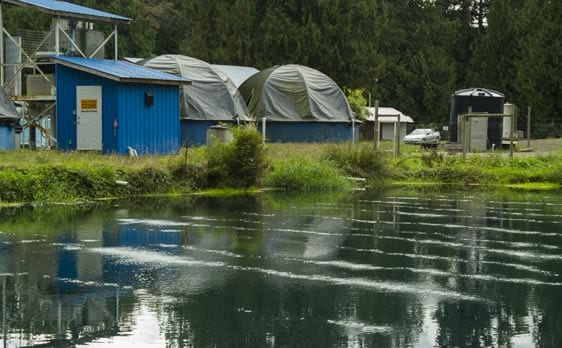Water Quality
Salinity
Salinity is the concentration of dissolved salts in water. It is an important element of a habitat. Aquatic animals adapt to live within certain salinity ranges. The Sunfish for example could not survive in salt water because it has adapted to live in common ponds and freshwater. Animals living in salty conditions tend to be more tolerant of a wider range of salinity. Many species of fish migrate from salt to freshwater in order to spawn.
Salinity at the surface of the water is especially affected by weather. During dry seasons, water evaporates and salty water develops. The added freshwater of rainfall dilutes salty water. After a heavy rain, look for freshwater fish in normally saltier water. During a drought, saltwater fish may be found.

Phosphates and Why We Measure Them
Phosphates, which contain phosphorus, are a plant nutrient that can also be a pollutant. Phosphates can develop in water and contribute to algal blooms much in the same way as nitrates. In fact, phosphorus is often the “missing ingredient” limiting the growth of aquatic plants. With the addition of phosphates to a stream or lake, plant growth and subsequent death can accelerate and eventually damage an ecosystem by depleting the oxygen levels.
Water pH
The percentage of hydrogen ions (H+) in a solution is called the pH. A solution is more acidic when it contains more hydrogen ions. The level of acidity in wetlands water is important to the plant and animal life surviving in that environment. Most animals are adapted to living in neutral conditions. Peat bogs are naturally more acidic than other wetlands-the plants and animals there are adapted to this acidity. Changes in pH particularly endanger the lives of young animals.
Alkalinity
Alkalinity is not a pollutant. It is a total measure of the substances in water that have “acid-neutralizing” ability. It should not be confused with pH. pH measures the strength of an acid or base; alkalinity indicates a water body’s power to keep its pH from changing.
Alkalinity is important for fish and aquatic life because it protects or buffers against pH changes and makes water less vulnerable to acid rain. The main sources of natural alkalinity are rocks, which contain carbonate, bicarbonate and hydroxide compounds.
Nitrates and Why We Measure Them
Nitrates are a plant nutrient-they help plants to grow. Nitrate is found in nature in very small amounts due to the ongoing processes of growth and decay. When plants and animals die and decompose, ammonia is produced. Bacteria usually turn the ammonia into nitrate (NO3). However, pollutants such as sewage or manure contain much higher levels of nitrates. High levels of nitrate may seep into groundwater or streams from fertilized fields, lawns, golf courses, septic system effluent, or from manure runoff.
If an excess of nitrates seep into a lake, algae and other plants grow very quickly. A massive growth of aquatic plant life, called a “bloom,” can change the character of a lake dramatically. Water becomes murky, and the water temperature warms. Worse yet, when the plant life dies and begins to decompose, bacteria move in and use up all the oxygen. The oxygen level becomes so low that many types of fish and insects can no longer survive in the water. Excess nitrates can start a chain reaction that has very serious effects.
Chlorides
Chlorides in solid form are salts containing chloride and a metal. Some common chlorides are sodium chloride (table salt), calcium chloride and magnesium chloride. In water, these salts dissolve to form chloride ions and metal ions. Small amounts of chlorides are essential for life; they pass through digestive systems unchanged and become a part of wastewater.
Chlorides are found in nearly all rivers, lakes and streams. They may get into the water from chloride-containing rocks, seawater, farm fertilizer runoff, papermaking and galvanizing processes, softening operations, oil wells and refineries.
Turbidity
Suspended solid matter that scatters light passing through the water causes turbidity, or the cloudiness in water.
There are many possible sources of turbidity. Most people think primarily of sediment from disturbed or eroded soil clouding the water. Soil may be eroded from agricultural lands, as well as from construction sites or stream banks. A high population of bottom feeding fish, such as carp, can also stir up sediments and cloud the water.
Suspended sediment can carry nutrients and pesticides throughout the water system. In addition, suspended particles near the water surface absorb additional heat from sunlight, raising surface water temperature, and decreasing the amount of dissolved oxygen that the water can hold.

